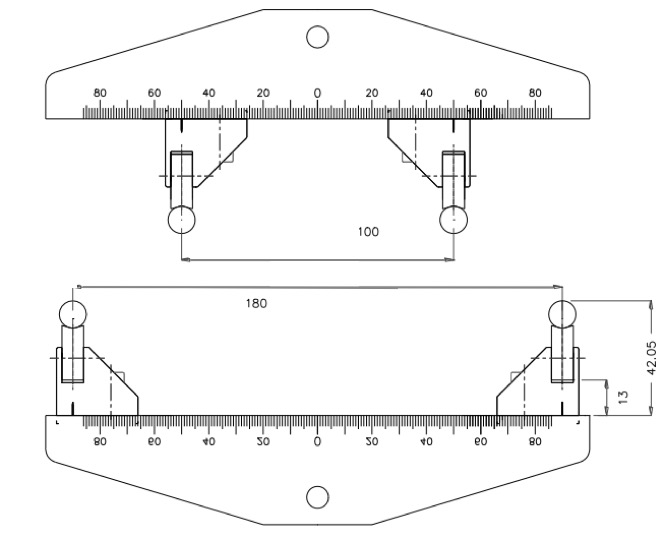
This method is used for the resistance to the bending test for the ceramic is mainly governed by ASTM C 1161. This particular ASTM standard defines specific exemplary dimensions, corresponding to a choice of three support spans, ie., 20, 40 or 80 mm, called Configurations A, B, and C, respectively. These configurations use thick specimens 1.5, 3.0 and 6.0 mm, respectively. In both cases the three or four load points, and of a semi-finished or a fully articulated test device is permitted. The purpose of articulation is to accommodate any torsion or lack of flatness of the specimen from samples are often tested in AS was fired. The object of the test data is the ceramics, whose strength is 50 MPa (~ 7 ksi) or greater. The bending stress is calculated based on simple beam theory with the hypothesis that the material is homogeneous and isotropic. The tensile and compressive elasticity modules are identical, and the material is elastic linear.
This test method covers the determination of flexural strength of advanced ceramic materials at ambient temperature. Test specimens may be 3 by 4 by 45 to 50 mm in size that are tested on 40 mm outer span four-point or three-point fixtures.
Referenced Documents
- ASTM Standards
- C1239 Practice for Reporting Uniaxial Strength Data and Estimating Weibull Distribution Parameters for Advanced Ceramics
- C1322 Practice for Fractography and Characterization of Fracture Origins in Advanced Ceramics
- C1368 Test Method for Determination of Slow Crack Growth Parameters of Advanced Ceramics by Constant Stress-Rate Strength Testing at Ambient Temperature
- E4 Practices for Force Verification of Testing Machines
Military Standard
- MIL-STD-1942 (MR) Flexural Strength of High Performance Ceramics at Ambient Temperature Available from Standardization Documents Order Desk, DODSSP, Bldg. 4, Section D, 700 Robbins Ave., Philadelphia, PA 19111-5098, http://www.dodssp.daps.mil.


